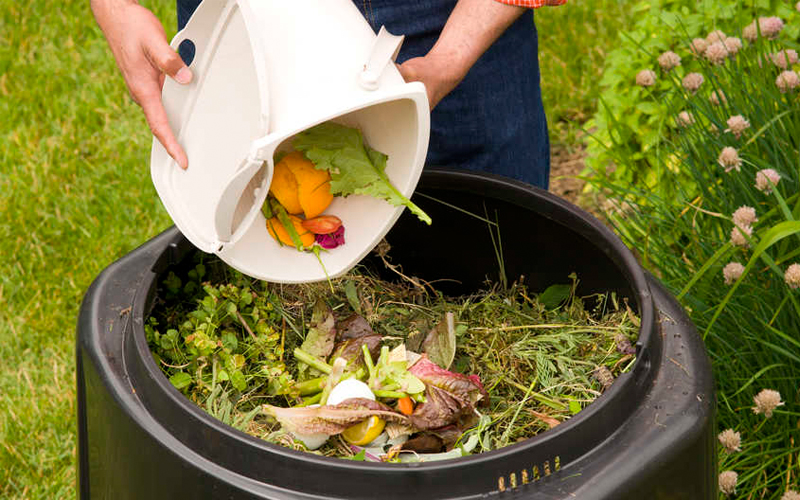Professional Practice
Applying Ecological Design: Residential Composting
 Compost of food and yard scraps / OregonMetro.gov
Compost of food and yard scraps / OregonMetro.govAccording to , in 2007 approximately 33 million tons of yard waste entered the municipal waste stream, representing 13 percent of total municipal waste in the United States. More than 25 percent of waste disposed in landfills is yard and food waste, which can instead be transformed into productive resources.
Composting is an efficient way of managing household food and yard waste. Composting provides a valuable nutrient-rich medium that can be used in soil to grow healthy plants, and reduces the need for excess water, fertilizers, and other pesticides for gardens.
On properties with , compost can be used as a soil amendment to increase water and air flow into the ground, and help plant roots establish. Adding compost to soil also protects local watersheds by filtering out stormwater pollutants by 60 to 90 percent.
There are various types of composting systems, which can be added to backyards or even used indoors. Many cities offer curbside compost pick-up or drop-off programs for residents that cannot compost their food and yard waste on site. San Francisco, for example, provides compost bins and .
Source: , U.S. Environmental Protection Agency;
Organizations
Resources
, Cornell Waste Management Institute, Cornell University
, Garden Guide
, BioCycle
, Environmental Protection Agency
, American Society of Landscape Architects Northern California Chapter
Research
ˇ°,ˇ± Stu Campbell, Storey Publishing, 1998
ˇ°,ˇ± Lars Hudley, 2012
ˇ°,ˇ± Jeff Lowenfels, Timber Press, 2013
"," Barbara Pleasant and Deborah L. Marin. Storey Publishing, LLC, 2008
"," Nicky Scott. Chelsea Green Publishing, 2007
Government Resources
, California Integrated Waste Management Board
, State of Massachusetts
, Colorado Department of Health & Environment
, City of San Francisco, California
, Environmental Protection Agency
, DC Department of Public Works
, Seattle, Washington
, New York City